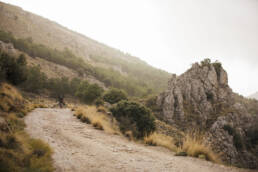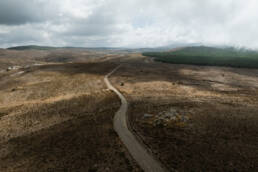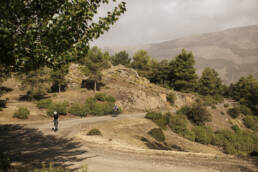The Sierra de Baza Natural Park, situated in northeast Granada, shares a border with Almería. Together with the Sierra de los Filabres, it forms a significant mountain range within the Penibaetic System. The park is characterized by its elevation exceeding 2.200 meters and experiences scarce, irregularly distributed rainfall due to the semi-arid environment of the surrounding Hoya de Baza.
Fauna and flora
The park’s diverse fauna and flora are determined by variations in altitude, climate, and relief. Higher areas boast extensive native pine forests, while lower regions showcase a mix of oak groves and cultivated land. The fauna varies by altitude as well: high areas are dominated by large birds of prey like the golden eagle, while middle areas harbor mammals such as deer, foxes, and wild cats.




5 MINUTES WITH ALMUDENA CANO,
DIRECTOR OF THE SIERRA DE BAZA NATURAL PARK
Why is this Natural Park so special?
The predominantly pine forests of this largely unknown and heavily forested area provide a habitat for a wide variety of interesting flora and fauna. The extensive network of forest roads and tracks makes it possible to visit and enjoy the unique and seasonally changing landscapes by bicycle from any of the five urban centers in the area. This promotes a healthy, active, and sustainable way to experience the rich biodiversity of the municipalities.
What corner of the Sierra de Baza can’t we miss?
The highest areas of the park contain a mix of Scots pine nevadensis and black pine, which combine with creeping junipers and junipers to form a priority habitat for the European Union. Also located in this area are the Prados del Rey, Pozo de la Nieve, and some mining enclaves with recently restored public infrastructures.
What positive impact do you think cycling can have on the territory?
Knowledge of the Park in particular and of these regions in general, which have a wide variety of values to showcase, in addition to their natural, cultural, archaeological, geological, gastronomic, and ethnographic heritage.
On the other hand, what recommendations could we give to cyclists so that this impact does not conflict with the conservation of the territory itself?
When planning a bike route, it’s crucial to be well-prepared. Contact the Park office to find out about other activities scheduled in the area you intend to visit. This will help ensure a positive experience for everyone by avoiding overcrowding or conflicts. Assess the requirements of your planned route and be considerate of hikers in shared sections: Stay on designated roads, trails, and cycling tracks, Wear appropriate clothing for the weather, Pack enough water (fountains may have untreated water) or Ensure your mobile phone is charged.
RECOMMENDED TOUR AND OFFICIAL CYCLING GUIDE
REMEMBER THIS IS A PROTECTED AREA, PLEASE HAVE A LOOK TO THE ENVIRONMENTAL RECOMMENDATIONS
Sources: Andalucia.org / Juntadeandalucia.es / wikipedia.org